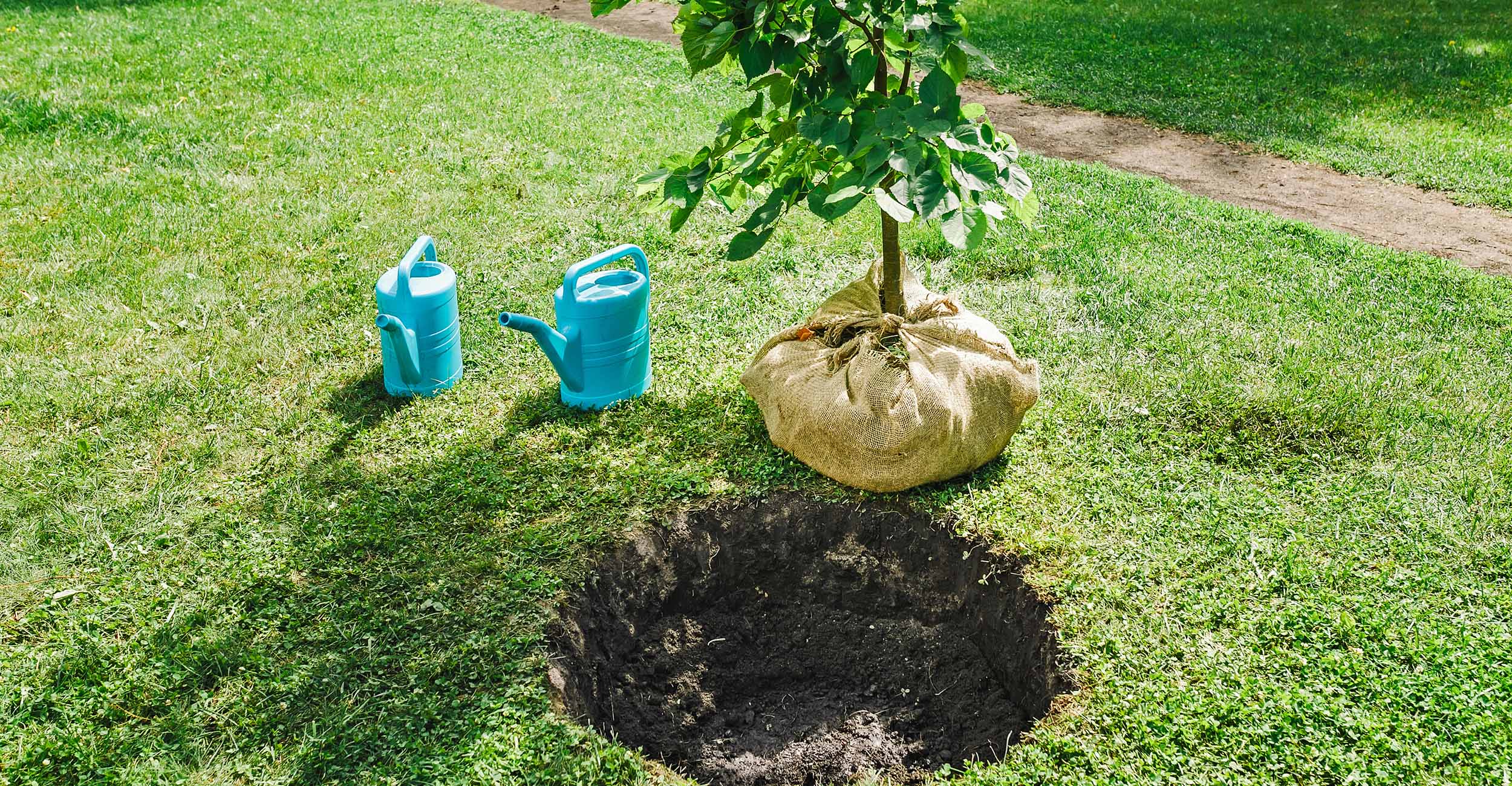
Fall isn’t just for pumpkin spice – it’s for planting trees, too
Thursday, August 26, 2021
Media Contact: Trisha Gedon | Communications Specialist | 405-744-3625 | trisha.gedon@okstate.edu
The October 2020 ice storm and frigid temperatures in February took a toll on trees in Oklahoma. The sound of chainsaws filled the air as homeowners and parks employees cleared debris.
Many trees were too damaged and had to be removed. Others will take years to fully recover, said Mark Bays, urban forestry coordinator with the Oklahoma Forestry Services.
While people often take them for granted in the landscape, trees are an integral part
of everyday life. They do much more than provide shade or a place to build a treehouse.
They are a critical part of what makes Oklahoma communities livable, Bays said.
“Besides cleaning the air and water and increasing property values, research has determined
that spending time in open spaces such as your back yard or a park setting where trees
are present helps maintain a healthy immune system, reduces stress and even contributes
to lower heart rates,” Bays said. “More doctors are beginning to prescribe to their
patients to spend time in nature to help improve overall health.”
Tree replacement should be done in the fall, whether in private yards or public parks, said David Hillock, Oklahoma State University Extension consumer horticulturist.
“Fall is typically the time of year when people are taking road trips to see the changing colors of the leaves, but with those two storms just a few months apart, homeowners and city parks employees need to be making plans to establish new trees,” Hillock said. “Fall offers several advantages for getting trees and shrubs in the ground before winter arrives.”
Roots grow when the soil temperature is above 40 degrees. The root systems of fall-planted trees and shrubs will have an opportunity to develop and become established if planted now. Hillock said when spring arrives with warmer temperatures, an expanded root system that was established in the fall can better support and take advantage of the growth surge.
“Balled and burlapped plants can be planted now so they have time to recover from transplanting and proliferate roots before the spring growing season begins,” he said. “However, not all trees and shrubs should be planted at this time. Bare root plants should be planted in late winter when they’re completely dormant.”
In order to give the tree or shrub the best chance at survival, proper planting is a must. Dig a hole at least two times wider, but not deeper than the root ball. Homeowners who are dealing with heavy, poorly drained soils should plant the tree so the top of the root ball is just above the level of the surrounding soil. This allows for settling and increases soil drainage and available oxygen to the roots.
Refill the hole using only the dirt removed when digging and pat it down around the tree or shrub. Water thoroughly to settle the soil and eliminate air pockets. Although tempting, don’t fertilize immediately after planting as this can burn or injure the root system, which would result in plant death.
Bays said newly planted trees will require some extra care, including regular deep-root watering for the first couple of years.
“Tree watering is different than turf watering. The amount and frequency depend on the size of the tree at planting and the type of soil. Homeowners will need to provide enough water to provide moisture to the entire root system,” he said.
What can homeowners do to help prevent the devastation Oklahoma experienced with these two weather events? Bays had a couple of suggestions.
“Our trees were severely impacted, and it’ll take years for some of them to recover. Corrective pruning on damaged trees is essential in the recovery process. There’s still time to remove broken and dead branches that may still be hanging from trees,” Bays said. “Seek guidance from professionals to help guide you on how to correctly prune them. Homeowners should contact a reputable International Society of Arboriculture professional arborist to tackle jobs that are too big for them to handle on their own.”
He also suggested keeping trees well hydrated. While Oklahoma has received a decent amount of rainfall, it’s important to remember trees require a much different watering schedule than turf. An easy way to check if a tree needs water is to stick a 10-inch-long screwdriver into the soil, remove it and check for moisture. If the soil is moist, skip the watering. If the soil appears dry, a slow, deep soaking is recommended around the area of the tree as far as the branches extend from the main trunk.
“It’s important for homeowners and public parks caretakers to keep trees healthy through ongoing maintenance and watering,” Bays said. “The healthier a tree is going into a severe weather event, the better the opportunity it has for making it through.”
OSU Extension offers additional information in its Tree Planting Guide fact sheet. OSU Extension’s Oklahoma Gardening television program also has information on planting trees online.
